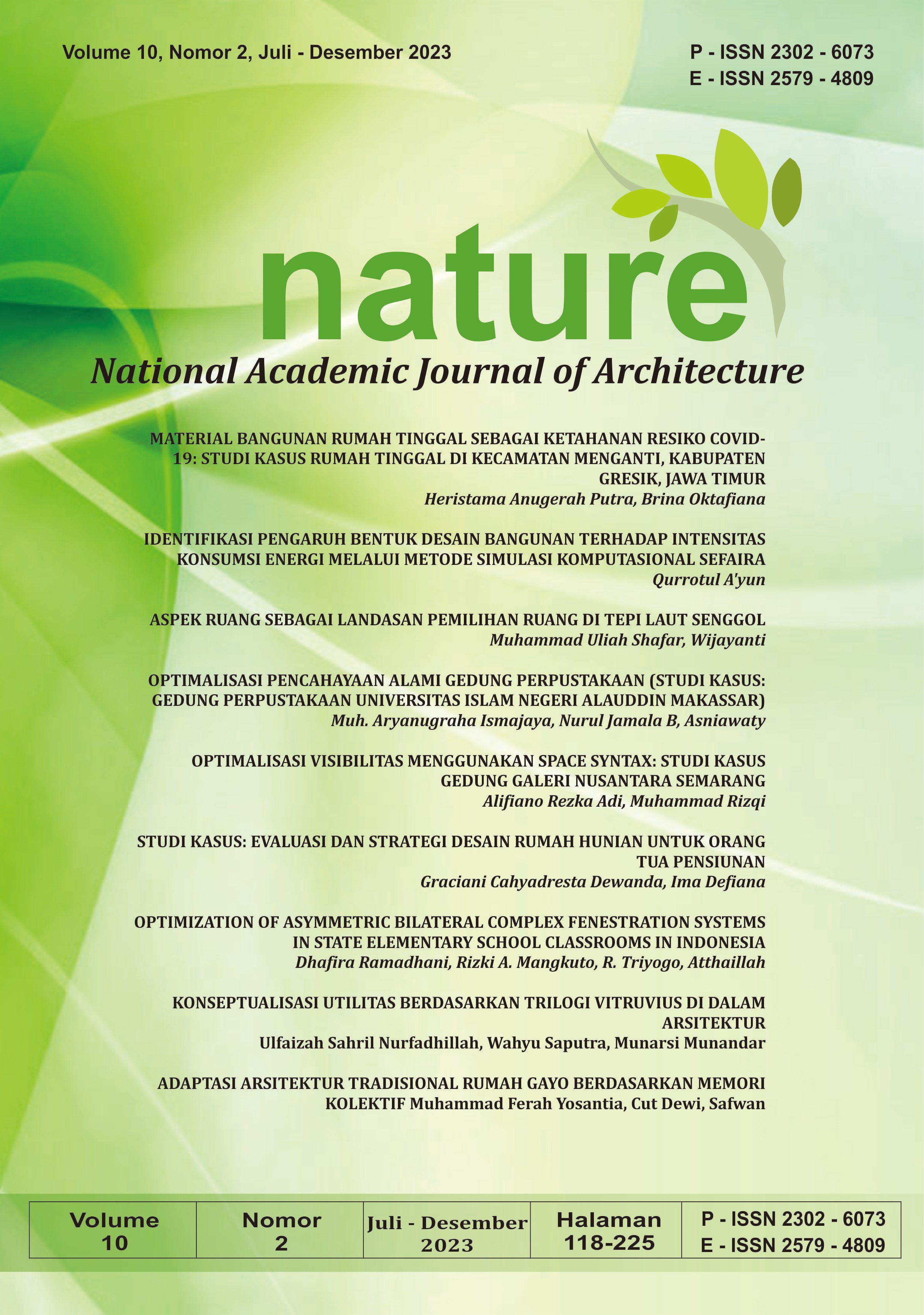ADAPTASI ARSITEKTUR TRADISIONAL RUMAH GAYO BERDASARKAN MEMORI KOLEKTIF
Abstract
The Gayo tribe is distinct in its language, clothes, ornamentation, culinary, and architectural works, all of which reflect the group's unique activities. The traditional Gayo communal house, known as Umah Gayo or Gayo House, is one example of originality. This paper aims to compare the adaptation of the Gayo traditional house to the surrounding environment based on literature with the community's collective memory, which has not been scientifically investigated. This study employs a qualitative technique with a descriptive approach to understand the Gayo traditional house's adaptability to its surroundings. Data was gathered through a literature review and direct observation of the remaining Gayo home structures. In addition, in-depth interviews with essential informants were undertaken. The findings reveal that the Gayo traditional house is a structure created by adapting to its surroundings, with the design, floor layout, and materials reflecting the rugged terrain of the Gayo area.
Downloads
References
Berry, J. W. ‘’Acculturation: living successfully in two cultures’’. International Journal of Intercultural Relations, No. 29 (2005): 697–712
Bott, S., Cantrill, J. G., dan Myers, O. E Jr. ’’Place and the promise of conservation psychology’’. Human Ecology Review, No. 10(2), (2003): 100–112
Edwards, B. ‘’Green architecture’’. Architectural Design, No. 71 (4), (2001): 21-23.
Hadjad A., Ali Z., Ardy M., Kasim M. S., dan Umar R. (1984). Arsitektur Tradisional Propinsi Daerah Istimewa Aceh. Banda Aceh: Departemen Pendidikan Dan Kebudayaan Pusat Penelitian Sejarah Dan Budaya
Hilmasari L, Hasan I, Irwansyah M. dan Meutia E. ‘’Vernacular Approach In Providing Passive Heating System For Housing In Tropical Gayo Highland’’. Fourth International Conference on Sustainable Built Environment. (2008): 68–77.
Hurgronje, C. S. (1903). Het Gajoland en zijne Bewoners. Batavia.
Ifani S. M. ‘’Local Wisdom in Coffee House Design to Promote Gayo Culture and Tourism’’. International Journal of Architecture and Urbanism. Vol. 3, No. 1, (2019): 32–42.
Jo S. ‘’Aldo Rossi: Architecture and Memory’’. Journal of Asian Architecture and Building Engineering. Vol. 2, No. 1 (2003): 231–237.
Rapoport, Amos. (1983). House Form and Culture. London: Prentice-Hall International, Inc. 261-262
Scannell, L., dan Gifford, R. ‘’Defining place attachment: A tripartite organizing framework’’. Journal of Environmental Psychology, No. 30 (2010): 1–10.
Schefold R., Nas J. M., Domenig G., and Wessing R. (2008). Indonesian Houses Vol. 2: Survey Of Vernacular Architecture In Western Indonesia. Netherlands : KITLV Press.
Schultz, N. (2009). Theory of occupational adaptation (11th ed.). Philadelphia: Lippincott Williams & Wilkins.
Volz W. (1912). Nord-Sumatra; bericht über eine im auftrage der Humboldt-stiftung der Königlich preussischen akademie der wisenschaften zu Berlin in den jahren 1904-1906 ausgeführte forschungsreise. Berlin: D. Reimer (E. Vohsen)
Copyright (c) 2023 Muhammad Ferah Yosantia, Cut Dewi, Safwan

This work is licensed under a Creative Commons Attribution-ShareAlike 4.0 International License.
By submitting your manuscript to our journal, you are following Copyright and License











